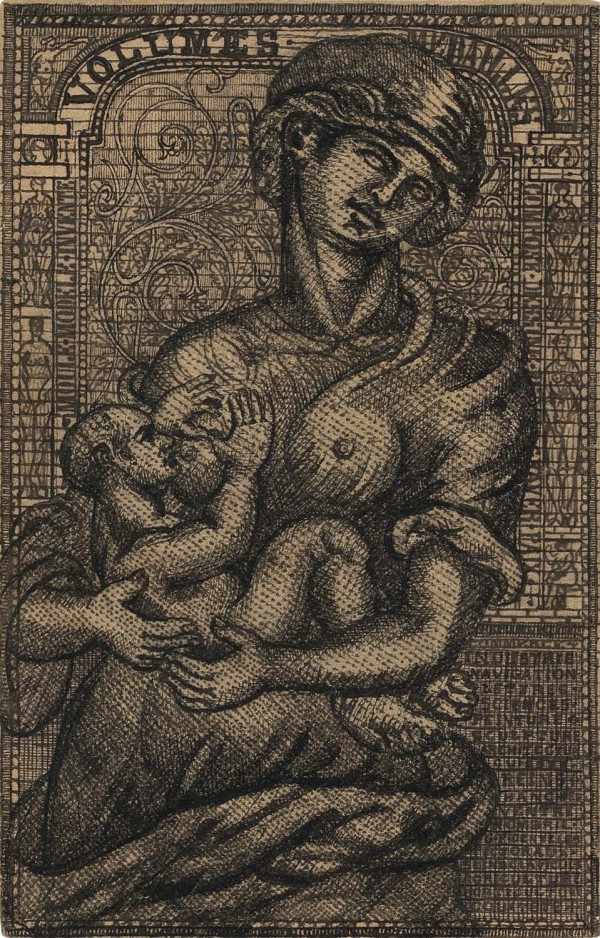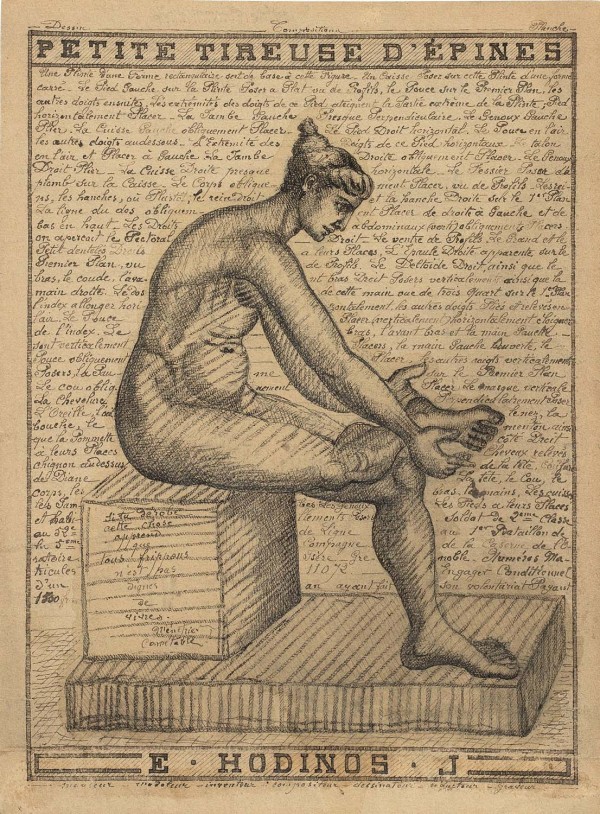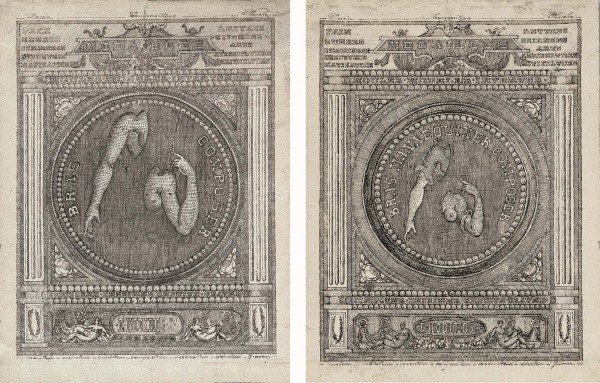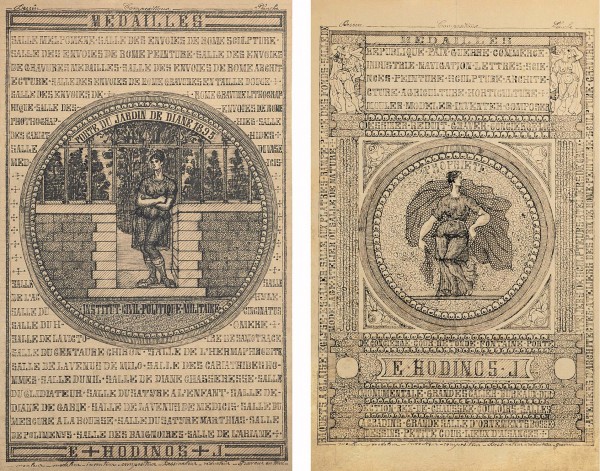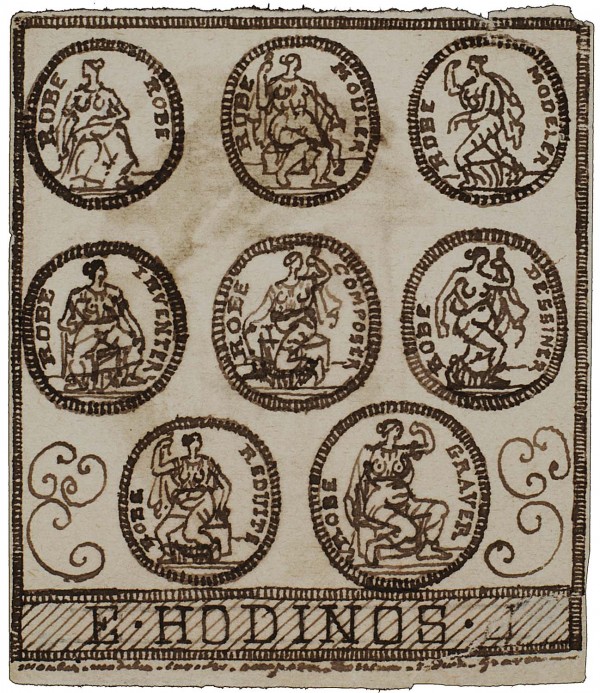Apprentice at the age of sixteen with Tasset, an esteemed medal engraver, Joseph Ernest Ménétrier studied drawing and, after his military service, spent some time at the Beaux-Arts. At twenty-three, he was hospitalized in the psychiatric hospital of Ville-Evrard for “manic excitement” and would never leave it. He would begin a considerable body of work ten years after his arrival and sign under the pseudonym of Émile Josome Hodinos thousands of drawings in ink and pencil, most of which have disappeared. These copies of medals with all their features (images, epigraphs, mottoes, ornaments) constitute a true encyclopedia, an inventory of vices and virtues, description of human anatomy, attitudes, clothing or household items.The image of a woman, often naked or wearing a transparent veil, composed intact or sectioned, appears often in his plates. Along with his drawings, Hodinos wrote L’Histoire générale des Etats européens de 1453 à 1789 (The General History of European States from 1453 to 1789) and a political dictionary.
